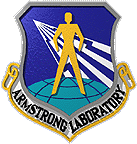The rigorous analysis of a realistically shaped
inhomogeneous model for humans or experimental animals would
be an enormous theoretical task. Because of the difficulty of
solving Maxwell's equations, which form the basis of
analysis, a variety of special models and techniques have
been used, each valid only in a limited range of frequency or
other parameter. Early analyses were based on plane-layered,
cylindrical, and spherical models. The calculated dosimetric
data presented in this handbook are based primarily on a
combination of cylindrical, ellipsoidal, spheroidal, and
block models of people and experimental animals. Although
these models are relatively crude representations of the size
and shape of the human body, experimental results show that
calculations of the average SAR agree reasonably well with
measured values. Calculations of the local distribution of
the SAR, however, are much more difficult and are still in
early stages of development.

Go to Chapter Two.
Return to Table of Contents.
Last modified: June 14, 1997
© October 1986, USAF School of Aerospace Medicine, Aerospace Medical Division (AFSC), Brooks Air Force Base, TX 78235-5301

